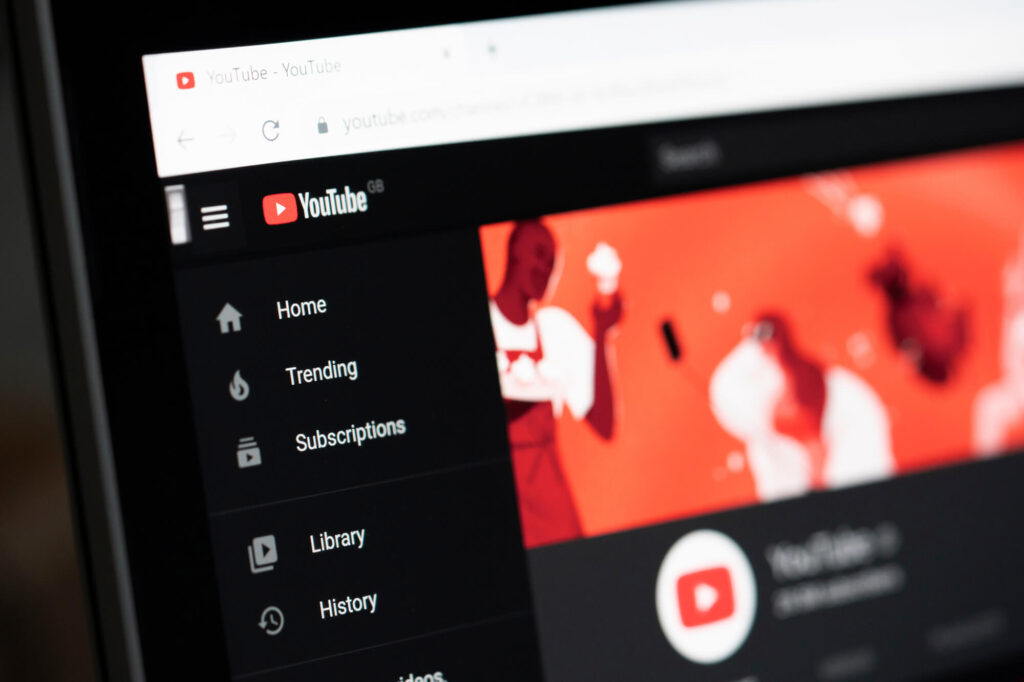YouTube reaches the grand old age of 20 in 2025, which would make it Gen Z in human terms, but very much a veteran in the internet world! It is a cultural phenomenon that changed the way we consume video content while at the same time empowering individuals from all walks of life to share their stories.
YouTube is also the second most visited website in the world and has influenced popular culture in numerous ways. However, many of us see it as a means to share and view videos rather than a social media platform.
Now the question is can YouTube be in the same bracket as Facebook, TikTok, Instagram, and others is well worth answering, not only because it could help individual users get the most out of the platform but also because it aids brands and businesses in understanding the immense potential of YouTube as a digital marketing tool.
Exploring YouTube’s Identity

Allow us to take you back in time to 2005 when Facebook was in its infancy, MySpace was ruling the online world, and a tweet was something you heard in your back garden!
A trio of former PayPal employees in California hit upon a world-changing idea based on the simple premise that they wanted to make it easier to upload, find, and share videos online.
The very first YouTube video was uploaded in April 2005, which was an intentionally mundane monologue with co-founder Jawed Karim commenting on the size of the elephants’ trunks at San Diego Zoo!
Hardly groundbreaking, but a bigger clue to YouTube’s identity moving forward came in the next couple of months, when a Nike ad became the first video to hit a million views, and a Saturday Night Live skit became one of the very first examples of what we now know today as a viral video.
Entertaining & Informing
These videos, and many others, sowed the seeds that cultivated YouTube’s identity as an entertainment hub, where users quickly realised that they could find video content to suit their individual interests, from the latest music videos to sports highlights, film trailers, TV clips, and pretty much anything else you could think of!
Another key feature of YouTube’s identity was that it was a platform where people could create and share videos relating to their own lives or professions.
Some of YouTube’s earliest content creators were existing or budding comedians and musicians, seizing upon the exposure that a website attracting over a hundred million views a day could provide.
Furthermore, YouTube provides a platform for individuals to bare their souls, share videos of their family and pets, rant about something, or just express themselves in whatever way they desired!
And from this individual expression, grew the content creator economy that we know today, with individuals and groups making videos with high production values, generating millions of views, as well as eye popping amounts of money from ad revenue shared by YouTube.
Social Networking Features of YouTube
YouTube is a place where people can create and post content for others to enjoy, which means at its heart it is very much a social media platform.
However, looking a little deeper into the nature of our relationship with YouTube, it is the shareability of content that is also a social networking feature.
YouTube makes it very easy to share videos, whether it be on a separate web site or blog, on messaging services such as WhatsApp, and of course, on other social media platforms. And so it follows that these videos will invariably generate further conversations, whether they be online or in person.
Bringing People Together
The idea of community is also core to social media, and YouTube has that in spades. Users can create their own profile, which allows them to interact with the videos they are watching by liking or disliking them, commenting, or replying to comments posted by others.
You can also subscribe to your favourite channels, personalising your YouTube feed while at the same time making sure you never miss the latest episode of your favourite YouTuber in action.
YouTube’s Impact in the Digital Marketing World

Social media redefined the digital marketing approach, opening up new channels for brands and businesses to market themselves, their products, and their services, as well as introducing a huge potential audience to target, and different ways to take aim!
YouTube offers all of these things, with the added bonus that its reach, as well as its reputation for high quality and authentic content, makes it the perfect place to take advantage of consumers’ increasing appetite for watching videos.
Targeting Your Audience
Another key advantage when it comes to digital marketing is that YouTube’s use of SEO allows videos to be optimised with keywords, tags and descriptions, increasing their chances of featuring highly on searches in an organic way that consumers trust more than paid-for social media advertising.
This also means that YouTube trumps other social media platforms such as Facebook, which prioritise posts from your own network.
Brand Identity
The ability to create your own channel, where people can engage with the videos you create, is also a key part of building a community around your brand, which in turn can lead to increased loyalty.
The video comments section on a brand channel can also be the perfect place to gauge brand sentiment – good or bad!
Comparing YouTube with Traditional Social Media
YouTube probably has the most in common with TikTok and Instagram, as it is considered to be a great place to consume authentic video content. At the same time, it also shares the more comment-based elements of X and Facebook.
However, what sets YouTube apart from TikTok and Instagram in particular, is that it is by far the most popular video sharing platform, with almost two and a half billion monthly active users as of the end of 2023.
Beyond the numbers, it’s also important to stress that YouTube has a truly worldwide reach, as it is part of the online fabric in places where other social media sites may not be gaining as much traction.
Longer Attention Spans
When it comes to the platform itself, one of the main differences between YouTube and the more traditional social media channels, is that it is the only social network to prioritise longer-form video content.
Of course, there’s the TikTok-esque “YouTube Shorts”, but for the most part, people who are consuming videos on YouTube are happy to watch for longer.
This opens up opportunities for brands to create different types of content, such as interview-led videos, event videos, or brand videos that talk about values, all of which can connect with viewers in a different way.
The Future of YouTube in Social Media Landscapes

As it stands now, nothing is challenging YouTube’s lofty position, but that certainly doesn’t mean we won’t see the
platform’s evolution in the coming years and decades.
A Connected Social Media Landscape
Integration is something we’d expect to see more of, starting with brands realising in increasing numbers that YouTube offers a unique opportunity to reach audiences across different platforms, increasing engagement while driving consumers to their own YouTube channels.
There’s also the possibility of increased integration with e-commerce platforms, which could take a number of forms.
This could be a brand video that links to a retailer’s own site, browsable product imagery that sits alongside YouTube ads, or even partnerships such as the one YouTube signed with Shopify in 2022, which allows creators and merchants to feature their retail products on their channels.
Social Media Optimisation
YouTube is also the second biggest search engine in the world, behind You Know Who, processing around 3.5 billion searches every day.
You don’t need to be a social media whizz to know that these kinds of numbers present a huge marketing opportunity, but the real question is, how do you take advantage in the future?
At Social Chameleon, we realised early on that huge numbers of consumers, particularly Gen Zs, are now using social media as a search engine. They do not just want to find the latest entertainment or sporting clips but also to seek out videos relating to topics that interest them, which include but are certainly not limited to cooking, fashion, fitness, gaming, and motoring.
YouTube, Instagram, and TikTok are the primary platforms that people use as search engines, as they often trust authentic and “real” video content far more than words on a Google search results page.
Leaders in the Field
We coined the term “Search First Social Media”. This simply means applying SEO principles to social media content to beef up a brand or business’ social media presence, increase engagement rates, and improve their reach.
We know that the businesses that adapt best to this changing landscape will see huge benefits, and as search-first social media pioneers, we are uniquely in a position to help them on the way, as the influence of platforms such as YouTube as search engines will only grow in the future.
So, if you’re interested in being at the forefront of search first social media, we’d love to hear from you!